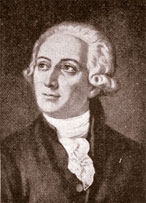
Source: Antoine Lavoisier, Wikimedia Commons
What is matter? Matter is defined as anything that has mass and takes up space. Matter is constantly changing. Some changes are physical changes while others are chemical changes.
(To learn more about matter and the changes in matter, see lesson titled, “Matter and Energy - Physical and Chemical Changes”)

Source: Antoine Lavoisier, Wikimedia Commons
In 1789, Antoine Lavoisier, a French scientist who is known as the father of modern chemistry, developed the law of conservation of mass. This law states that in a chemical reaction, matter can neither be created nor destroyed.

Source: Julius Robert von Mayer, Public Domain, Wikimedia Commons
In 1841, Julius Robert von Mayer, a German scientist, developed the law of conservation of energy. This law, which is very similar to the law of conservation of mass, states that energy is never created nor destroyed, just transformed into other forms of energy. The total amount of energy is the same before and after any energy transformation.
Most of the time these laws are discussed in chemistry and physics but they are very important when discussing living systems. Living systems follow the laws of conservation of mass and energy. Food chains, food webs, and energy pyramids illustrate how matter and energy cycle through living systems.
All living organisms depend on certain elements, such as oxygen, carbon, and nitrogen. (To learn more about these essential elements, see lesson titled, “Organic Compounds”) Every living organism cycles through the biotic (living) and abiotic (non-living) components of the biosphere.
Biogeochemical cycle is a name given to the various pathways elements cycle through the biosphere. If you break the word biogeochemical down, you can infer that there are biological, geological, and chemical parts to these cycles. The water cycle, the carbon cycle, and the nitrogen cycle are all examples of biogeochemical cycles.